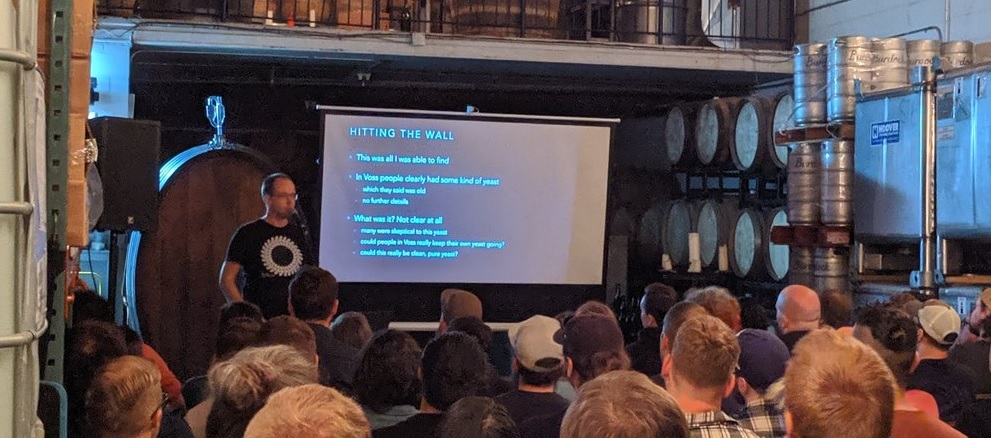 It’s hard coming up with new headlines every week, isn’t it. Look at that up there. It hardly makes any sense at all. And it’s getting a bit hard coming up with light entertaining content about beer to share. It’s usually all about something other than beer or like beer or nearly about beer. Like the best thing I saw this week – the tweet accompanied by the image to the left, captioned:
It’s hard coming up with new headlines every week, isn’t it. Look at that up there. It hardly makes any sense at all. And it’s getting a bit hard coming up with light entertaining content about beer to share. It’s usually all about something other than beer or like beer or nearly about beer. Like the best thing I saw this week – the tweet accompanied by the image to the left, captioned:
Toddlers in the 1970s looked like pensioners waiting for happy hour in a working men’s club.
This week, let’s look at stories about beer. Beery stories. You bet. Not about something related to beer or something just associated with beer. Hey, Jordan wrote something about beer… or actually drew it. He has created a map and a spreadsheet of all the current breweries and contract beer companies (firms which by beer from actual brewers, including on contract) on Ontario. It’s on his site and over to the right under the dropdown thingie. There. Help him by sending corrections… err, updates. Everyone likes that.
That’s about beer, right? Sure… well, maybe. Is this about beer? Ron wrote about UK cask during WW2 – not cask ale, just the wood in the casks:
In normal times British brewers would never have used American oak as it imparted too much flavour to the beer it contained. Unlike today, brewers wanted to avoid any trace of oak in their beer. Its presence was seen as a fault. But, with the supply of Memel oak dried up, brewers had little choice. When supplies of American oak in turn began to evaporate, brewers had to turn to a more local source.
OK, may be not but it was about something touching beer. Stan! Stan writes about beer like he did last week. He wrote again and got published again – this time about hop creep… which is not actually about the loud loser at the end of the bar in the crafty tavern:
“Hop Creep” isn’t the name of a beer-themed horror movie—just a real, ongoing mystery that brewers and hop scientists are still sorting out. Oregon State University’s Tom Shellhammer, one of the country’s top brewing scientists, says that his earliest moments of being introduced to the phenomenon were about five years ago, although he didn’t realize it at the time. “I was giving a talk at the 2015 Craft Brewers Conference, and somebody in the Q & A asked, ‘Hey, do you see people getting diacetyl when they dry hop?’ I was like, ‘No.’” Diacetyl is one result of hop creep. Beer with more alcohol than a brewery intended—which brewers call “out of spec”—is another, as are bottles or cans with dangerously high levels of carbonation.
Hops! Hops are in beer. And, in his return to London pubs and the blogging of same, the Tand put the beer into the Tand:
…there was a mission to accomplish. A visit to a Sam’s pub to establish London prices following the recent price increase. We chose the John Snow… a nice little boozer and trade was steady on this Wednesday afternoon. I had the stout, which needed the gas changing, while E had a half of Pure Brewed. The price list was snapped when the barman wasn’t looking and duly posted to a certain Curmudgeon. Prices are on the wickedly high side and now by no means a bargain. It does make you wonder how they’ll compete on this basis. One other thing. The notices forbidding this and that, which are found all over Northern Sam’s pubs, are conspicuous by their absence. I know. I checked everywhere. Double standards from Mr Smith it seems.
Hardly anything about the excellent Pellicle post this week by Helen Jerome on a cidery in Devon was about beer, but it did start with expected traditional character profile on the person behind the operation in question, deviating only by finding someone who was not first an unhappy accountant:
Spool back to late 2015, and Polly decided she’d had enough of sitting in an office. She needed a fresh challenge. Growing up in Devon, she gained a foundation in science with A-levels in chemistry, physics and biology; taken a module with Master of Wine Susan McCraith while doing a degree in Equine Business; studied Sustainable Agriculture at postgraduate level, then completed an EU-funded ‘slow food’ study tour in Tuscany. She’d never really been into cider though…
Speaking of science and even a bit about beer, Ed wrote about the scourge of taking the free case of beer and how that ethical flaw of his gnaws at his very soul – except there was a twist:
As every beer blogger knows getting free beer is the easiest thing in the world. Though breweries might grizzle about it, threaten them with a bad review and they’re sending you a case of beer as fast as their little legs can carry it. But despite this due to my insatiable greed I immediately said yes when offered a Hobgoblin beer and bugs snack pack.
Speaking of which, BBC News itself ran an excellent piece on social median influencers – aka what used to be called blegging – and the associated cap in hand:
Like many businesses during Covid-19, Reshmi has seen a change in her customers’ behaviour. Although many people cut back on unnecessary purchases, her bakery was busy as people carried on ordering her celebration cakes. Yet she also noticed influencers were asking for more freebies too. It’s something she has done in the past – looking at the influencer and their posts, who follows them, how they engage with their audience, but says it didn’t work for her. “We have never had a sale off someone [saying] they saw our cake on someone’s post or profile, it’s always been through word of mouth, from paying customers.”
This is interesting. Even if cake is not beer. I have heard many a chortler and scribe announce that “it’s not like anyone could think I have compromised myself by the free samples” but it’s not something you can really say for yourself. And it never plays out that way. Best to pay your way. Folk notice and note. Unless there are edible bugs involved.
Related, the question of free food in pubs. Discuss.
Suzy Aldridge posted something of a goodbye to all that in response to a BrewDog franchise opening up in her English city of Lincoln:
Now I’m out. It’s surreal. I’m looking in from the outside and seeing the struggles in the industry, seeing how friends are marching on. I almost feel left behind, lost, but also that I’ve escaped. I’ve sidestepped into a new career path by pure luck. It’s not something I love like beer but it’s interesting, it pays the bills and, unlike hospitality, the rug won’t be swept from under my feet, then shoved back, then removed again. I’m comfortable, even as I drink some of the very last bottles of Lincolnshire Brewing Co that are in my fridge.
Eoghan Walsh posted a new podcast at Brussels Beer City featuring an interview with Jean Van Roy of Brussels brewery Brasserie Cantillon. He wisely avoided raising my accusations of 2006 but, still, had a good beery chat:
On a scorching hot early September day on the eve of brewing season for Cantillon, we met at a bar influential not only for the city but also for him, and his family brewery. We talk lambic evangelisation in a country that still doesn’t really get it, his youthful escapades drinking crap beer with friends, how is approach to brewing has changed thanks to his relationships with winemakers and chefs, and how the brewery’s corridors ring hollow and lonely in the absence of American, Italian and other foreign accents.
Elsewhere, you know there is nothing going on in beer in some corners if the discussion turns to flat flavoured water with vodka added.
Speaking of beer and corners, in this week’s edition of That Sorta Happened in Beer History, Mudge the Elder asked this question and got answers:
It’s before my time, but does anyone remember (or have talked to those who do) whether waiter service was commonplace in pubs across the UK in the 50s and 60s, or was it primarily a Northern thing?
A whole new world was revealed to mine eyes. Someone identifying themselves only as “[Bx2-B=R]” stated:
Primarily northern, my Lancastrian mum says, and common enough there that she didn’t find it weird; down south, mostly seems to have been an inter-war fad in big new pubs and died out with WWII. [Ray]
Talk of bell pushes, tipping and waiters in burgundy jackets with “silver” trays ensued. Sit down before you start through the thread.
Beer crime of a newer sort happened over in Michigan, as noted by the worst beer blogger ever:
…there was no money on the premise, and luckily no vandalism, but the intruders were there for more than a half an hour. “They ended up pouring nine beers,” he said. “It’s not somebody having a quick beer and leaving.” One of the men called someone and then soon, a bunch of kids entered the premises, running around and looking through the brewery’s merchandise. Luckily, the kids seemed to only have pop, not alcohol…
Another sort of loss is happening in bars like this out of Winnipeg that I don’t think I’ve seen reported in this way before even though it is very 2020:
It’s enough to make a brewski aficionado weep while sudsy hops are poured down the sink. An enormous amount of beer is going to waste in Winnipeg thanks to some bars and pubs being forced to close due to the coronavirus pandemic. Other establishments operating at reduced capacity are also having to dump hundreds of gallons down the drain…
I love the first sentence. If you hate sudsy and brewski, then you at least have to admire the proper use of aficionado.
Anyway, finally and speaking of which… perhaps… no, not really… there were comments made after the announcement of the NAGBJ awards… what’s that?… oh, it’s back to a “w”… BAGNW… is that it? Anyway, my comments were limited to “Third?!?!” and “Third?!?!” given I was mystified at certain outcomes. But I used to judge these things as part of panels, too, and I know that there are limits and these limits are realities. As I have noted before, these quibbles mainly hover around process and in particular nominations being from the authors and/or publishers. It would be easy enough to just send all members ballots rather than the filtering function of judging panels. They are also limited in audience as many folk don’t need or care about awards, especially once an “award-winning” adjective is already allocated to the bio.* Yet:
I just want people to know it’s totally normal, okay, and valid to wish for recognition and acknowledgement of a job well done. I don’t write about the things I write about because I NEED those things, but darn if it doesn’t feel good when it happens.
Boom! As with all the medals, I presume it is a stepping stone for the aspiring – which is good and normal and to be encouraged. And a small reward in a field without much recognition.
But, unlike during the years of my own experience, concerns and even unfair slags were raised about it all being too GBH focused or even bad back scratchy. In homage to 1830s British Parliamentary politics, lobbying continues for the establishment and the reformers. While many entries or entrants have appeared on that bloggy space’s webby pages… well, what is wrong with that? Especially as other outlets have been disappearing for years? Small pond. That’s where we swim. I do say that while acknowledging (having sifted through it all week after week now for years) I think there is a sort of beer trade writing of a sort not only is a bit samey and a bit goal oriented or even formulaic (the last paragraph often seems written first, as it were) but still a sort which may attract praise within a circle of co-aspirants. Well? So what!?! Why be a grump in all things? It’s just, yes, light entertainment – and we have to remember that much beer writing is actually very good, including, yes, even at GBH.** Perhaps not as much as they would say… but, in the end, Beth did entirely the proper thing and set the record straight in vivid technicolour. Go Team Beth.***
That’s a lot. I’m done. As always, remember there’s more out there. Boak and Bailey mostly every Saturday, plus more at the OCBG Podcast on Tuesdays (this week Jordan touts discount ham!!!) and sometimes on a Friday posts at The Fizz as well. And sign up for Katie’s weekly newsletter, The Gulp, too. Plus the venerable Full Pint podcast. And Fermentation Radio with Emma Inch. There’s the AfroBeerChick podcast as well! And have a look at Brewsround‘s take on the beer writing of the week. Not to mention Cabin Fever. And Ben has finally gone all 2009 and joined in with his own podcast, Beer and Badword. And remember BeerEdge, too.
*No one cares about being “awards-winning” do they?
**Let’s stick with very good, shall we. Superlatives are so… not superlative. Plus, I’m a Pellicle sort of person.
***See the “*” here.





 Did someone say England? The BBC Archives shared
Did someone say England? The BBC Archives shared 




